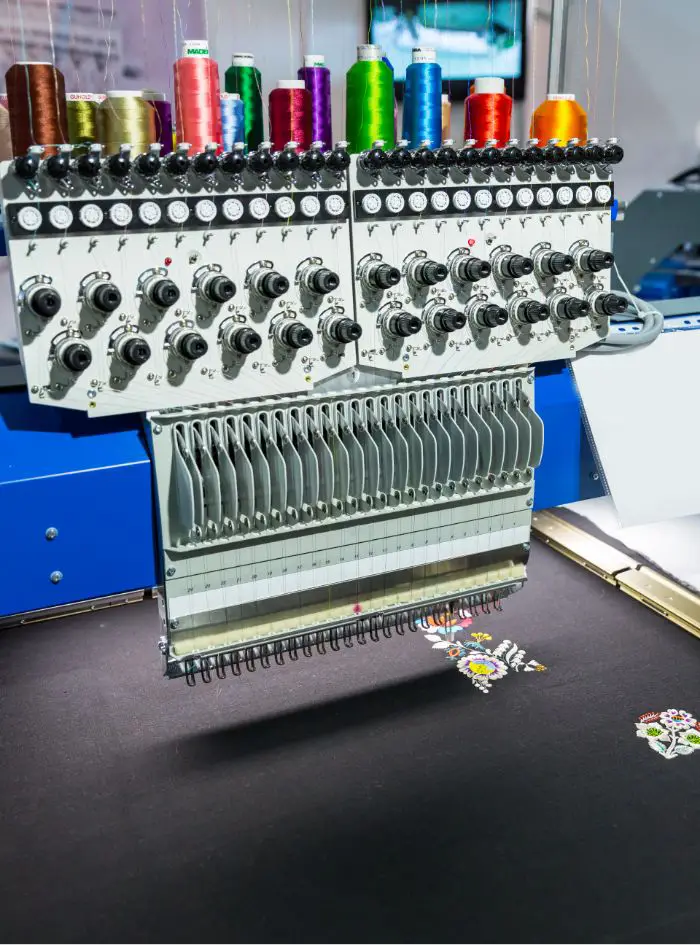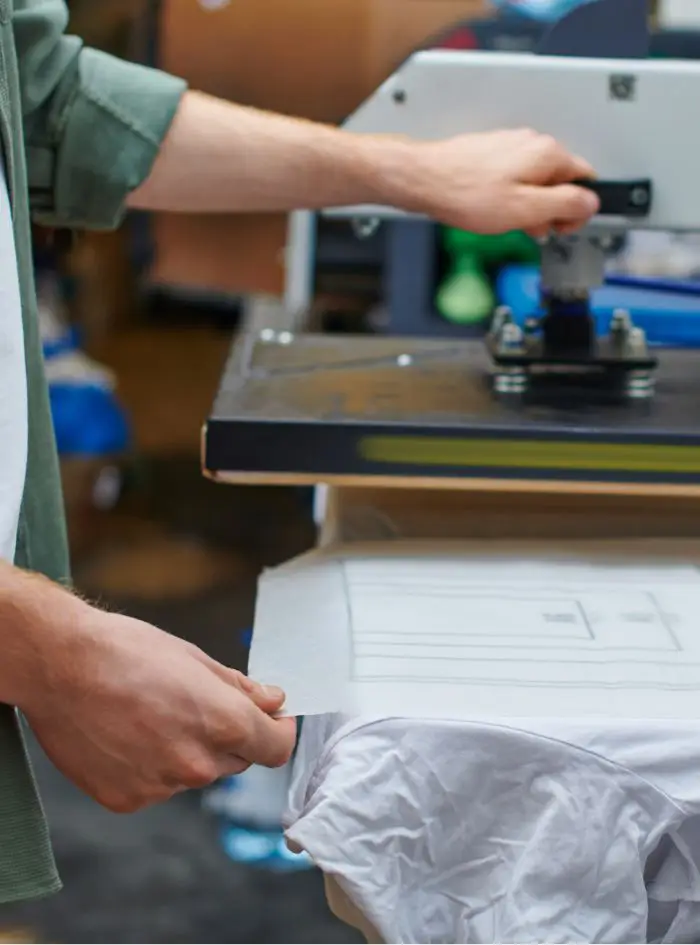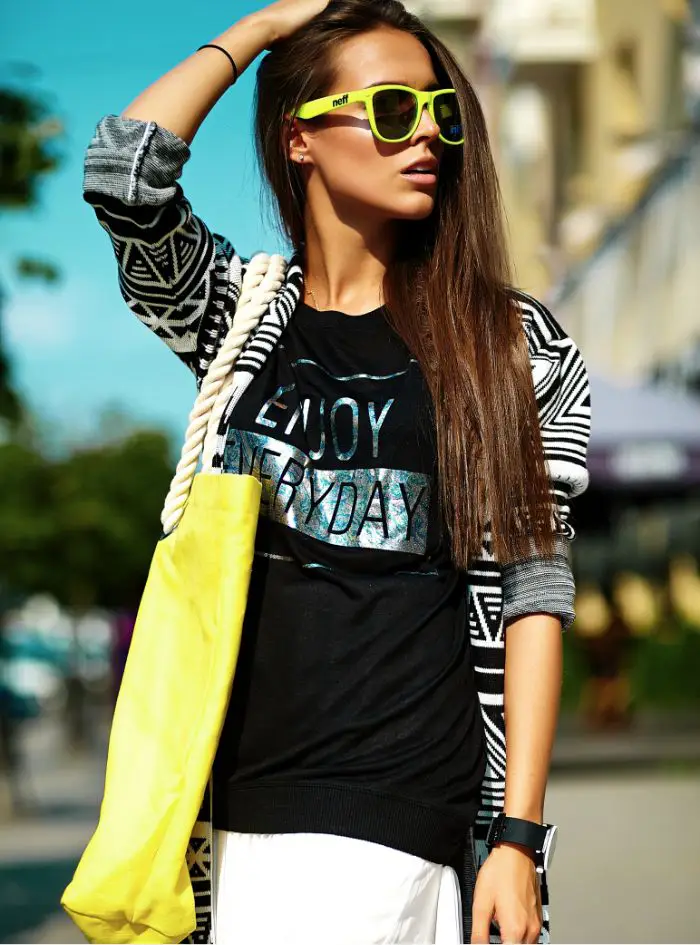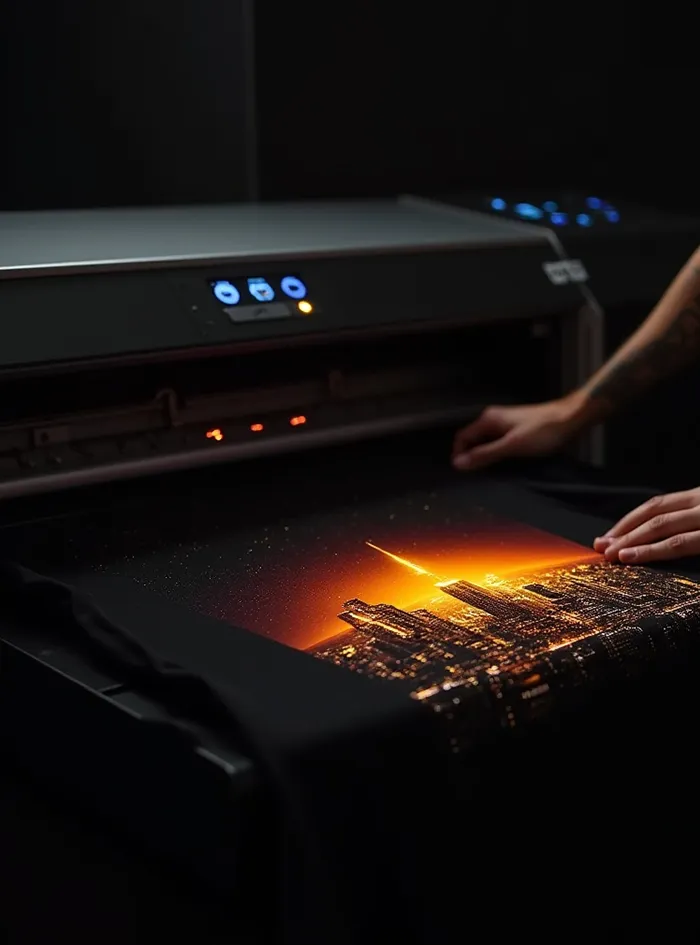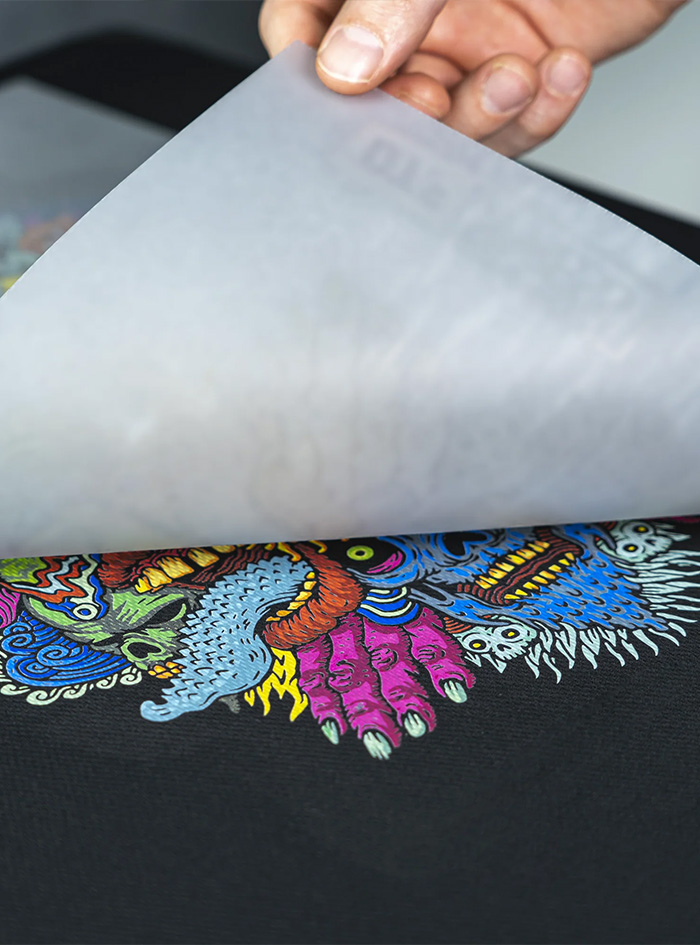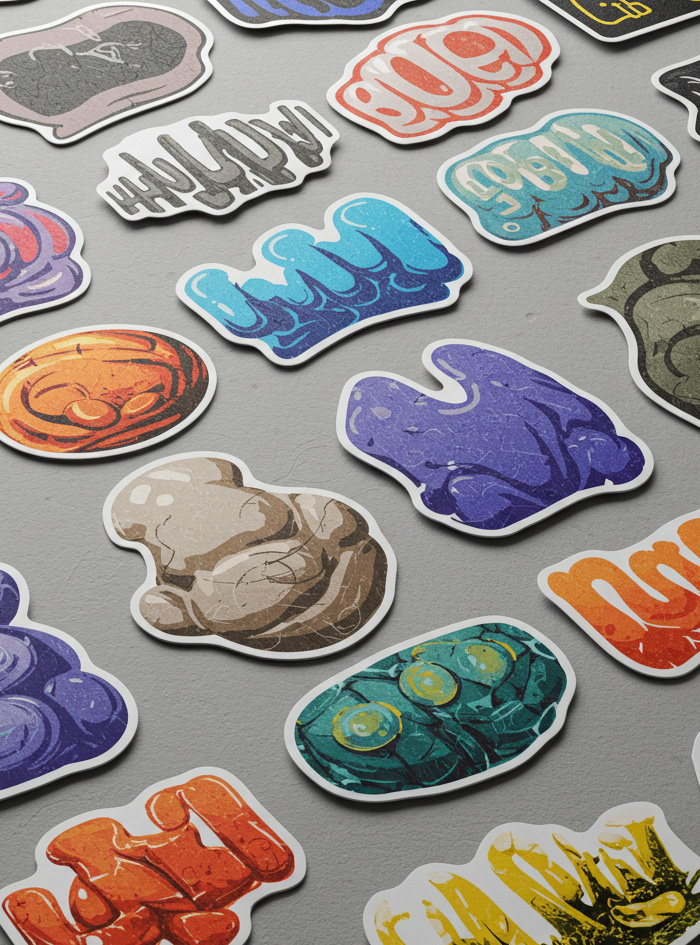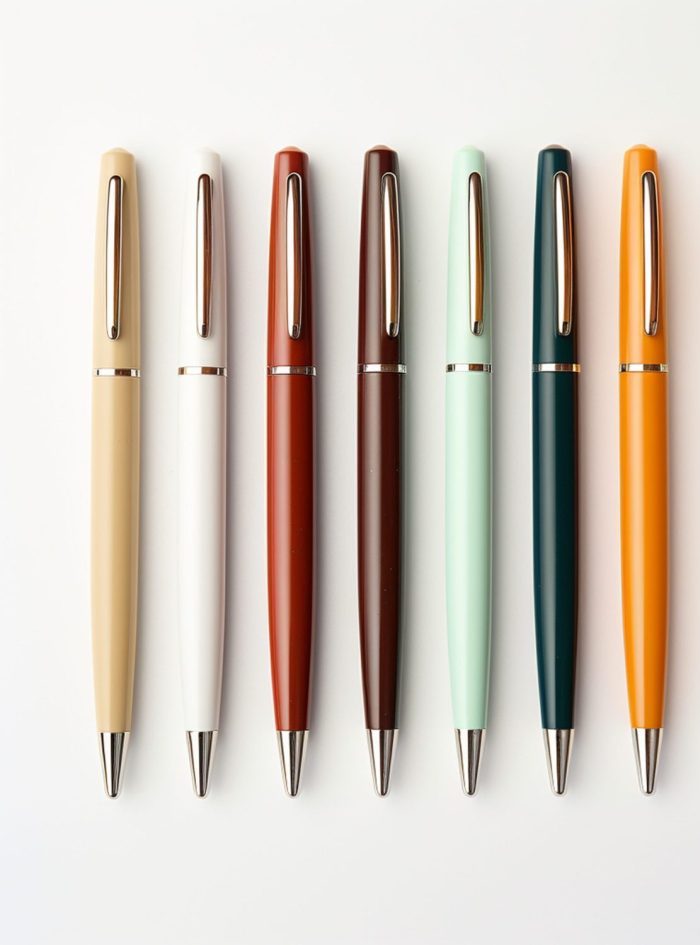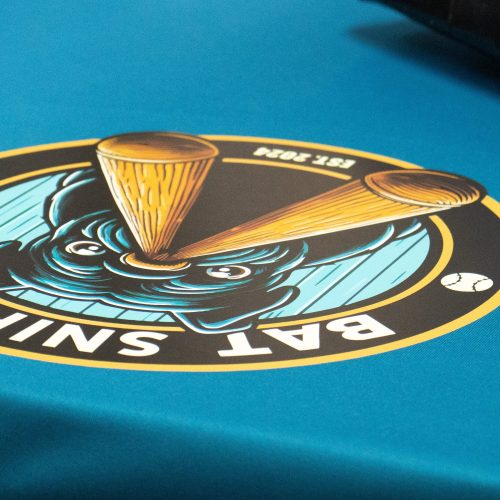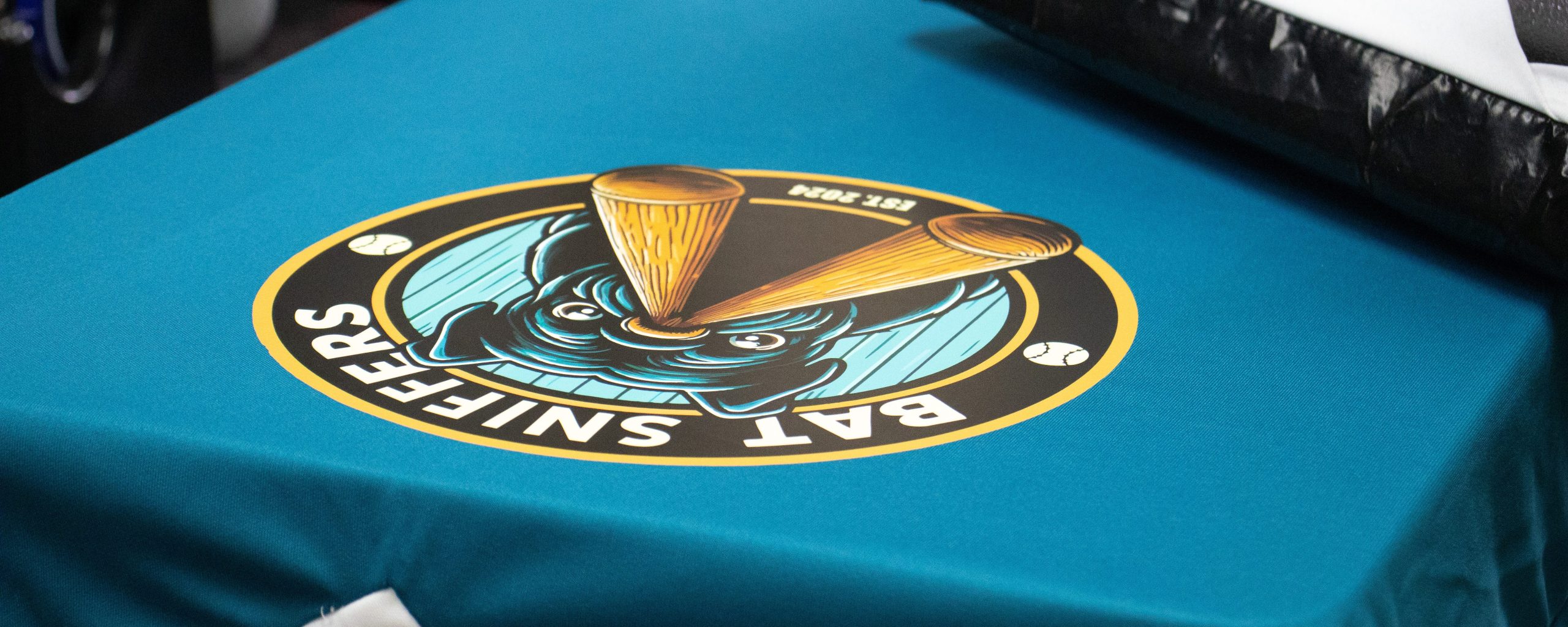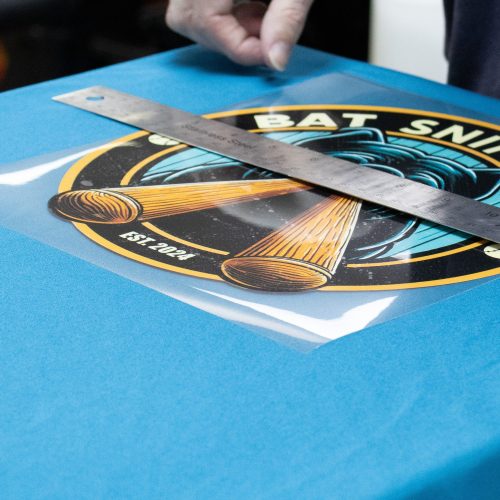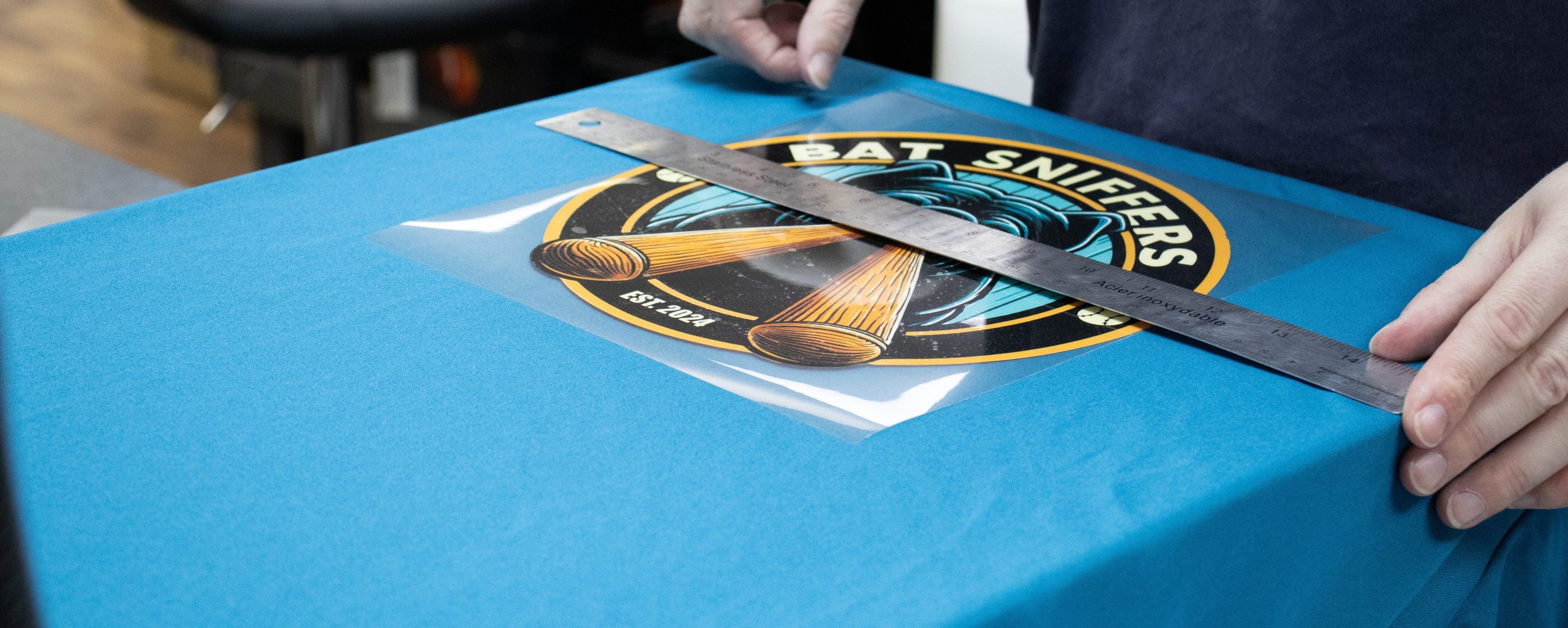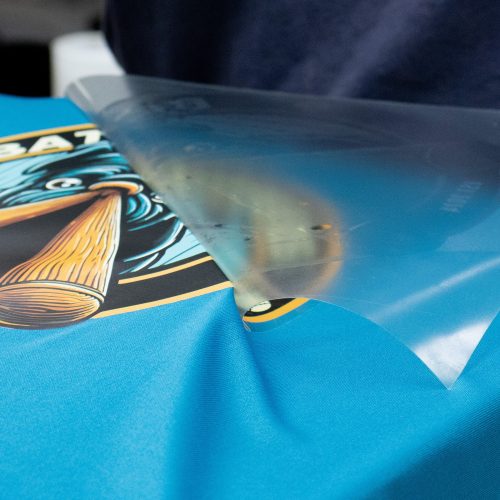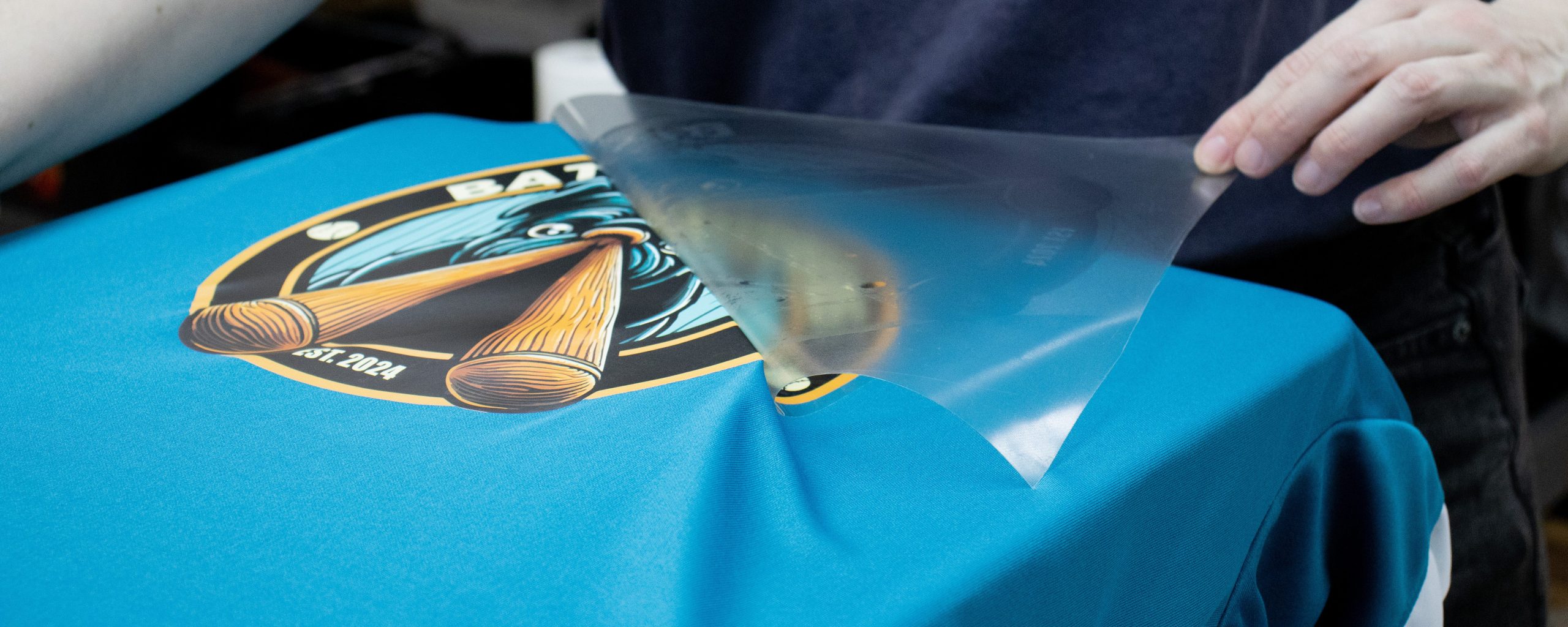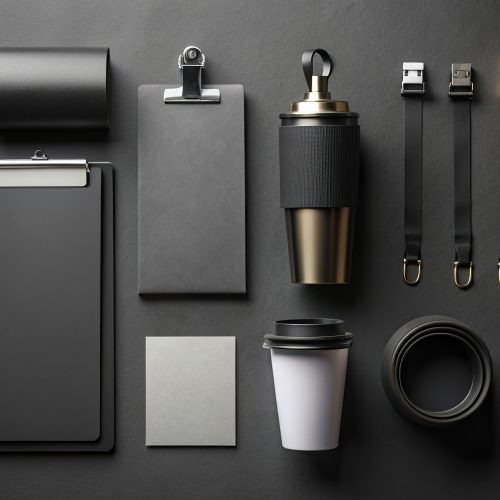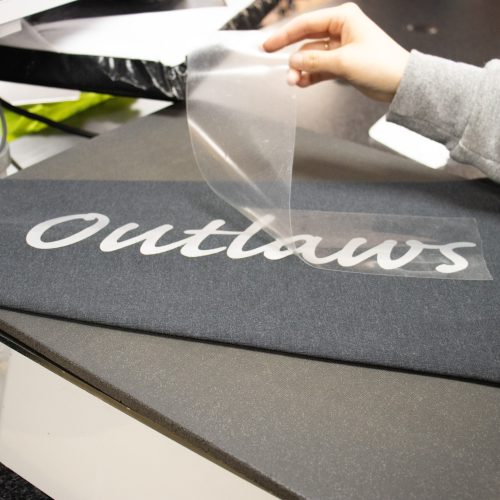“Transfer Your Vision to Life.”
Transfers are a method of decorating garments and products by applying pre-printed designs using heat and pressure. Designs are printed onto a special transfer paper or film, then heat-pressed onto fabric or other materials, bonding the artwork to the surface.
This method is known for its versatility and ease of application. Transfers can include everything from single-color logos to full-color photographic images, making them ideal for custom apparel, promotional items, and specialty products.
How Transfers Work
The process begins by printing a design in reverse onto a transfer medium such as paper or film using inks like plastisol, sublimation, or water-based formulas. After curing or setting the ink, the transfer is ready to be applied.
The design is then pressed onto the garment using a heat press, which activates the adhesive and permanently bonds the image to the fabric. This makes transfers a fast and flexible printing option.
Common Uses for Transfers
- Custom T-Shirts and Hoodies – Perfect for branding or team wear.
- Promotional Products – Shopping bags, giveaways, and more.
- Limited Edition Apparel – Small runs with high-quality detail.
- Corporate Branding – Logo placement on polos, jackets, and hats.
Pros of Transfers
- Fast Production: Ideal for quick-turnaround orders.
- Versatile Applications: Works on cotton, polyester, blends, and more.
- Crisp Detailing: Great for fine lines, full-color images, and gradients.
- On-Demand Printing: Print what you need, when you need it.
Cons of Transfers
- Feel of the Design: May feel thicker or have a plastic-like texture.
- Durability Varies: Some transfer types may not last as long as screen printing or DTF.
- Not Always Suitable for Bulk Orders: May not be cost-effective for high-volume runs.
DTF vs. Traditional Transfers
While both involve applying designs via heat press, DTF (Direct to Film) printing uses water-based inks and adhesive powder cured onto PET film. Traditional transfers may use plastisol or sublimation and often require different papers or materials.
DTF offers some added flexibility, including broad fabric compatibility, long-lasting prints, and vibrant color detail. Transfers, on the other hand, are still a strong choice for quick jobs and standard garments where budget and speed are priorities.
When to Choose Transfers
Transfers are a great fit when you need fast turnaround, cost-effective small batches, or designs with vibrant color. They’re perfect for one-off projects, event wear, or promotional items where efficiency and quality matter.
Choose transfers if you’re looking for a flexible printing method that works on a variety of fabrics and doesn’t require a large order size. They’re also ideal for testing new designs or seasonal trends without heavy upfront costs.
Wash and Care Tips
To keep your transfer printed items looking their best:
- Turn them inside out before washing.
- Use cold water and a gentle cycle.
- Avoid bleach, fabric softeners or harsh detergents.
- For drying, air dry is best—but if using a dryer, stick to low heat.
- Never iron directly on the transfers—use a pressing cloth or iron from the inside.
Final Thoughts
Transfers are an excellent choice for flexible, fast, and detailed garment decoration. Whether you’re printing promotional pieces, event apparel, or custom clothing, transfers offer creative freedom with a wide range of materials. For certain jobs, DTF may offer extra durability and detail, but transfers remain a reliable and effective option for many printing needs.


